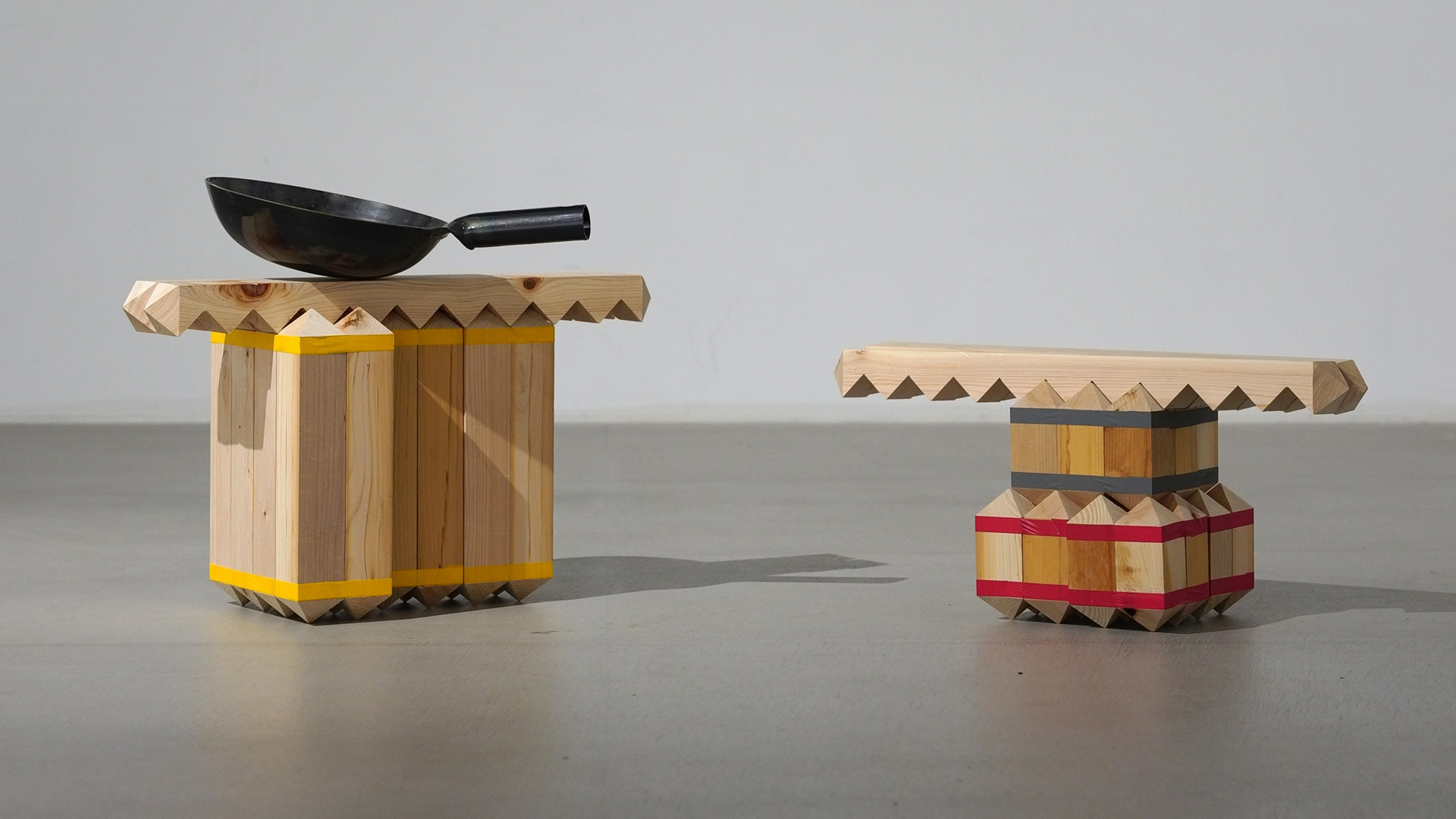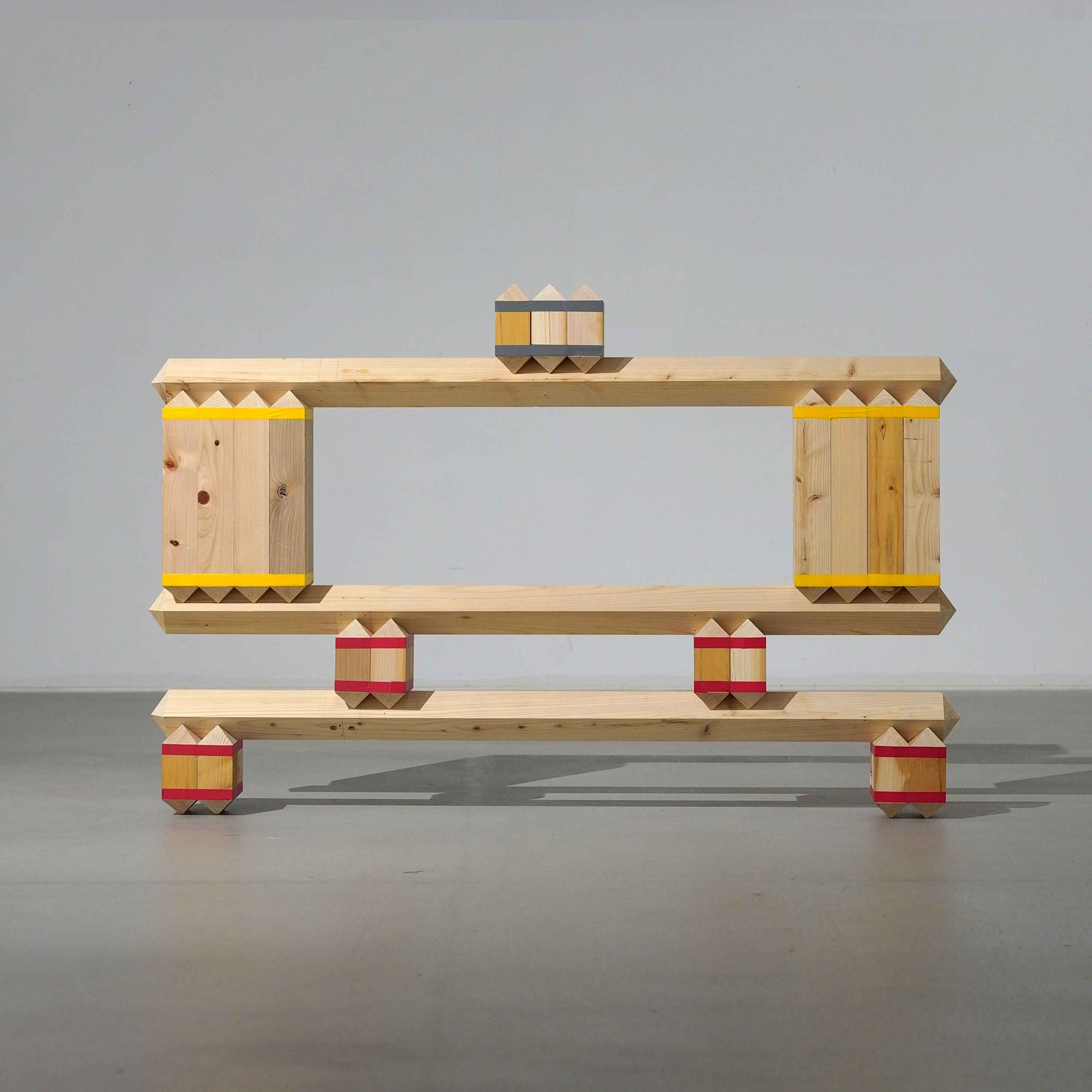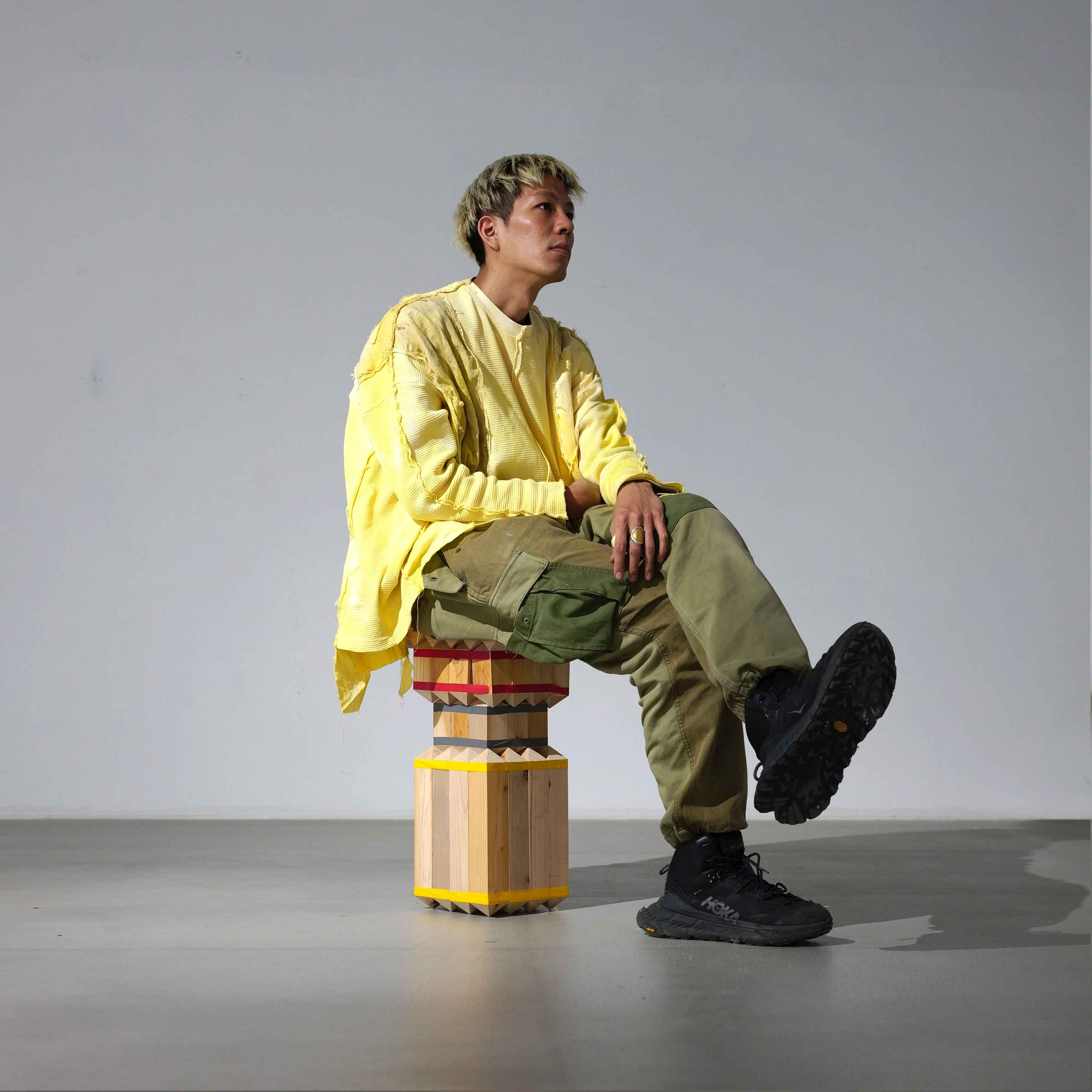Japanese architect and designer Takuto Ohta recently launched Deku, a unique furniture collection that can be configured and re-configured by stacking the elemental pieces against and on top of each other. The blocks that come together to form cohesive furniture pieces and decorative objects bear 45 degree cuts along their edges, a feature that helps them bind against each other, while also staying erect and stable on the ground. Takuto Ohta's modular and adaptable wooden furniture redefines furniture design, inviting people to experiment and play with the singular wood pieces to create unique geometric designs that can act as functional objects.
On being asked about the inspiration and process that led to building these functional objects, Ohta says “I don't think about what I'm creating, I feel the laws of physics in the freedom and inconvenience of combination, and I see the forest with the smell and texture of trees. I like furniture, so when I moved my hand, the furniture was made naturally.”
The Deku blocks invite people to stack them against each other without a predefined intention or purpose, merely following their intuition and imagination to create peculiar looking pieces that can either serve as utilitarian objects or as standalone decorative pieces. “The creativity of building blocks, which can be transformed into rockets and buildings, is a manifestation of the complexity of less motivation,” says Ohta. He created these wooden pieces to entice the emotion of pleasure that one feels when looking at naturally piled stones in the environment.
The subtly coloured wooden blocks are additionally held together by brightly coloured masking tapes that stand out against the muted brown colour of the blocks. Weirdly juxtaposed against each other to form interesting shapes and forms, the Deku pieces, with their slantly cut edges, always appear open to embrace another wooden piece and transform into a new object altogether. Ohta acknowledges the natural urge of ‘making’ that humans carry, and offers an opportunity for the same with his geometric wood pieces.
Takuto Ohta is a Japanese architect and designer. He carries a special interest in exploring the relationship between humans and the products they manufacture. Most of his designs are born out of an attempt to expose users to objects that can evoke latent senses that remain concealed or unconfronted in today’s world.






 Sign in with email
Sign in with email














What do you think?